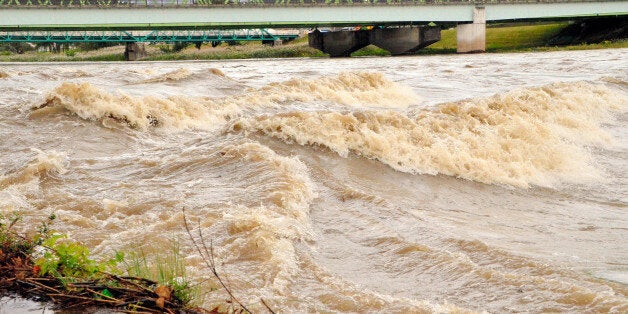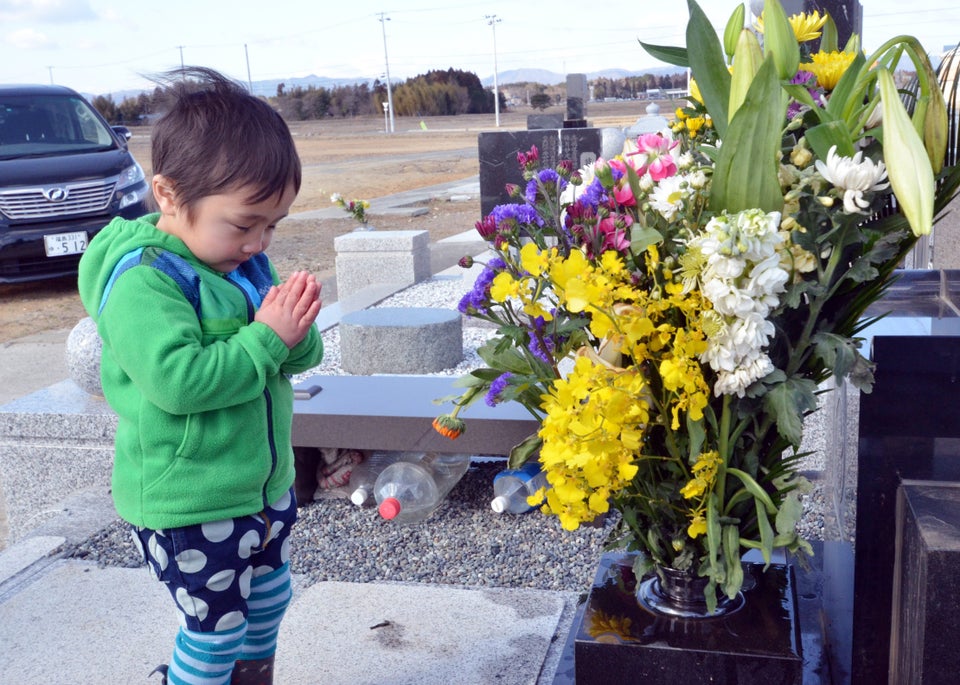
Heavy rain at the Fukushima nuclear plant caused a leak of radioactive water containing a cancer-causing isotope, possibly into the sea, its operator said Monday, as a typhoon approaching Japan threatened further downpours.
It is the latest in a long line of setbacks at the site and further undermines agreements between operator Tokyo Electric Power (TEPCO) and the government, which limit the level of radioactive contamination in water that goes outside the plant.
TEPCO said a barrier intended to contain radioactive overflow was breached in one spot by water contaminated with strontium-90 at 70 times the legal limit for safe disposal.
Strontium-90 is produced during nuclear reactions. It accumulates in bones and remains potent for many years, and it can cause several types of cancer in humans.
The admission came as a team of experts from the UN's nuclear watchdog wrapped up their review of Japan's progress in cleaning up the worst atomic disaster in a generation.
TEPCO has poured thousands of tonnes of water on badly-damaged reactors at Fukushima to keep them cool and prevent them from melting down again.
This huge volume of water has to be stored in large tanks until it is cleaned of the radioactive substances it picks up in the cooling process.
Rain exacerbates the problem because as it hits polluted surfaces, it becomes contaminated, meaning TEPCO needs to scoop it all up for storage and treatment.
While the storage tanks all appeared to have survived the battering from heavy rain on Sunday, the concrete overflow barriers around them were not high enough to contain the rainwater runoff in several places.
Meteorologists say a typhoon that is likely to bring further heavy rain is churning its way slowly towards Japan. Forecasters expect it will hit later in the week.
In August, 300 tonnes of badly-polluted water leaked from a tank. It is now believed to have mixed with groundwater that is on its way to the sea.
Meanwhile, the International Atomic Energy Agency (IAEA) was set to issue an assessment of progress Japan has made in dealing with the mess in and around the Fukushima plant.
The mission, which came at Tokyo's request, is a follow-up to an IAEA visit last year.
The international community has urged Japan to be more transparent over the clean-up at Fukushima, where reactors were sent into meltdown by the tsunami of March 2011, affecting a swathe of the country's northeast.
Prime Minister Shinzo Abe has insisted the situation is "under control", but doubts persist that the full extent of the problem is being revealed.
Copyright (2013) AFP. All rights reserved.
